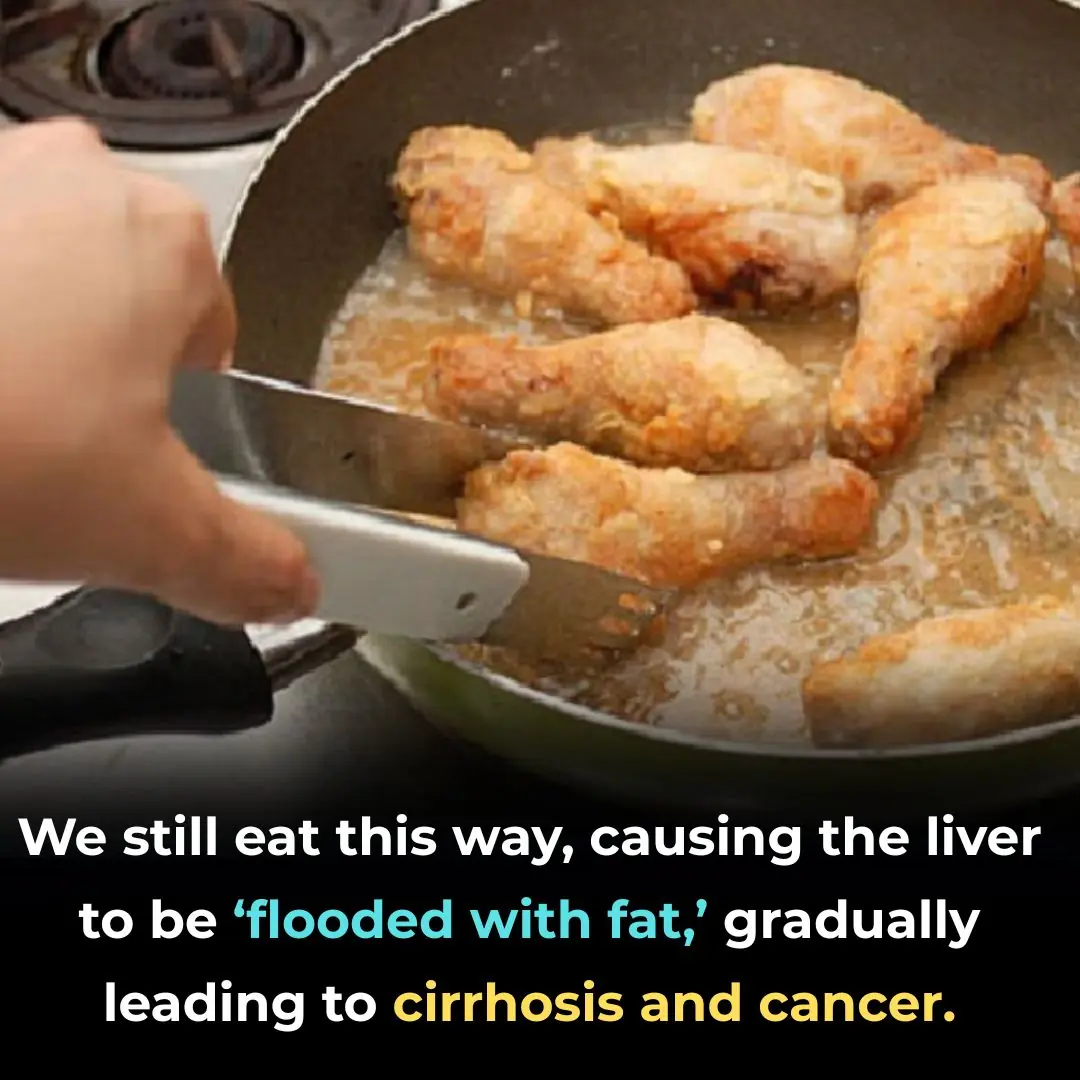
Natural Tricks to Clean Rusty, Greasy Gas Stoves — Make Them Shine Like New
The gas stove is often called the “heart of the kitchen”, where delicious meals come to life every day. However, with regular cooking, its surface can quickly accumulate rust, burnt oil stains, and grease residue, making it dull and unappealing. Beyond aesthetics, these stubborn stains can also shorten the stove’s lifespan by clogging burners and corroding the metal surface.
Don’t worry — with just a few simple household ingredients, you can restore your gas stove’s sparkle effortlessly and safely, without relying on harsh chemical cleaners. Let’s discover these proven, eco-friendly cleaning hacks below!
1. White Vinegar — The Natural Weapon Against Rust and Grease
White vinegar is well known as a safe and natural cleaning agent thanks to its mild acidity. It effectively breaks down layers of grease and dissolves rust build-up without damaging the surface.
🧽 How to do it:
Pour a moderate amount of white vinegar into a spray bottle or soak a soft cloth in it. Wipe directly over the greasy or rusty areas. For thicker rust patches, leave the vinegar to sit for 10–15 minutes before scrubbing gently with a soft brush. The acid will loosen the rust, making it easy to remove. Finally, wipe with a damp cloth and dry with a clean towel.
What’s more, vinegar doesn’t just clean — it neutralizes odors from old cooking oil and leaves your kitchen smelling fresh. According to Good Housekeeping, vinegar is one of the most effective and environmentally friendly cleaners for kitchen appliances and cookware.
2. Baking Soda — The Gentle Polisher for a Mirror-Shine Finish
If vinegar starts the job, baking soda completes it. Its mild abrasiveness and alkaline nature help lift off stubborn stains without scratching the metal or glass surface of your stove.
🧴 How to use:
Mix baking soda with a little water to form a thick paste. Spread it evenly over the stained areas using a sponge or cloth, then rub gently in circular motions. You’ll notice the grime lifting away.
For maximum effect, combine it with vinegar: spray vinegar first, then sprinkle baking soda on top. Allow the fizzing reaction to occur — this helps break down tough residues. As Martha Stewart Living notes, the vinegar-baking soda reaction loosens even the most persistent dirt without the need for harsh chemicals.
Rinse with clean water, dry the surface, and enjoy the shiny, refreshed look of your stove.
3. Lemon Juice — Nature’s Fragrant Degreaser
Lemon juice is another kitchen staple that doubles as a natural cleaner. Thanks to citric acid, it cuts through oil and rust similarly to vinegar but with a pleasant, citrusy fragrance.
🍋 How to apply:
Squeeze fresh lemon juice and dilute it slightly with warm water. Dip a cloth in the mixture and wipe down your stove. For extra cleaning power, sprinkle a bit of salt on the surface first — salt acts as a gentle abrasive. Rub the area using half a lemon in circular motions. Then rinse and dry.
The result? A sparkling stove and a refreshing scent that invigorates your kitchen. Research cited by The Spruce confirms that lemon juice is a safe and effective degreaser for stainless steel surfaces.
4. Protect Your Stove After Cleaning
Cleaning is just the first step — maintaining your stove’s condition is equally important. After each cooking session, wipe the surface with a damp cloth to remove fresh grease before it hardens.
You can also apply a thin layer of cooking oil over metal areas to prevent oxidation and rust. Regularly check and clean the burner knobs and crevices, as grease often hides there. A clean stove not only looks beautiful but also helps your burners perform more efficiently, saving gas and money in the long run.
🌎 Why Choose Natural Cleaners Over Chemicals?
While commercial cleaners promise quick results, they often contain strong acids and artificial fragrances that can irritate the skin, corrode metal, or release harmful fumes. In contrast, natural solutions like vinegar, baking soda, and lemon juice are safe, affordable, and environmentally friendly — perfect for households with children or sensitive individuals.
Experts at Mayo Clinic also warn that many chemical cleaning agents can trigger respiratory irritation and allergic reactions if not used with proper ventilation. Natural methods eliminate that risk while keeping your kitchen eco-conscious.
🧼 Final Thoughts
With patience and a few everyday ingredients, you can bring your old gas stove back to life — no expensive products required. These simple natural methods are time-tested by countless home cooks worldwide and continue to outperform many store-bought cleaners.
So next time your stove starts to look tired and grimy, skip the chemical sprays — let nature do the cleaning for you.
News in the same category


Apply This Simple Mixture — Even the Dullest Knives Will Become Razor-Sharp and Sparkling Clean

The Tiny Hole at the End of a Nail Clipper Has a Special Purpose — Most People Never Knew

The Coffee-Drinking Habit That Cancer ‘Loves’: Why You Should Never Make This Mistake

15 Things You Should Never Do During a Thunderstorm

8 Surprising Things You Can Do With Leftover or Expired Beer — You’ll Never Throw It Away Again!

Smart Ways to Fade Freckles and Reveal a More Even, Radiant Skin Tone

Everyday Emergencies: Small First-Aid Tricks That Could Save a Life

GTA 6 price set to soar for country of 130M people ahead of May 2026 release

Shaq’s Son Shaqir Pulls a $130K Stunt at Dad’s Expense. Here’s What He Did

14-Year-Old Texas Teen Follows In Older Sister’s Footsteps Of Graduating College Early

Heroic Connecticut Teen Rescues Mother and Three Children From A Burning Car

Black-Owned Social Platform ‘SPILL’ Launches Equity Crowdfunding Round for Users

11-Year-Old Uses Money From Lemonade Stand To Donate 22,000 Diapers To Single Mothers

This 102-Year-Old WWII Veteran Just Crossed Skydiving Off Her Bucket List

8-Year-Old Choreographs His Own Ballet Recital After His Was Cancelled

8 Little Miracles Starting from One Drop of Balm (Menthol/Oil) — Many People Have It but Don’t Know How to Use It

Place Two Cups at Your Hotel Door — It Brings a Special Benefit Everyone Should Try

Don’t Use a Whetstone! Try This Simple Trick to Make Your Dull Scissors Sharp as New
News Post

The Vietnamese Diet Habit That’s Damaging the Liver: A Silent Path Toward Fatty Liver, Cirrhosis, and Even Cancer

Apply This Simple Mixture — Even the Dullest Knives Will Become Razor-Sharp and Sparkling Clean

The Tiny Hole at the End of a Nail Clipper Has a Special Purpose — Most People Never Knew

The Coffee-Drinking Habit That Cancer ‘Loves’: Why You Should Never Make This Mistake

15 Things You Should Never Do During a Thunderstorm

8 Surprising Things You Can Do With Leftover or Expired Beer — You’ll Never Throw It Away Again!

Clear the apartment, I am the new wife of your husband, I will live here!” — a woman grinned and announced to me on the doorstep.

My husband called me poor in front of the guests, but he didn’t know something.

Your parents won’t be attending the wedding,” said the future mother-in-law to the bride.

Your wife stole my necklace!” – Mother-in-law shouted. “She’s a thief! I’ll have her locked up!

My salary is spent by me, Elena Viktorovna, and your son has a separate budget!” – the daughter-in-law retorted to her mother-in-law.

— They’re not my children,” screeched the aghast husband. “Lada, they’re… dark-skinned! Who did you pick them up from?

Decided to seduce the second son, too?” the mother-in-law screamed (upon discovering her daughter-in-law’s high-heeled shoes).

— So, sweetie, you’ll sell the summer house, give me the money, and I’ll pay off your husband’s debt, declared the mother-in-law as she looked at her daughter-in-law.

Having learned from the doctor that her mother-in-law’s discharge had been postponed for a week, the wealthy man’s wife sensed something was amiss and pleaded with the nurse to keep an eye on her husband…

Pack your things and get out!” declared Timur to his wife, though he had overlooked one detail

A Heartbreaking Goodbye: Remembering Beeper’s Final Journey

A Mother’s Battle: Fighting Cancer With a Newborn in Her Arms
